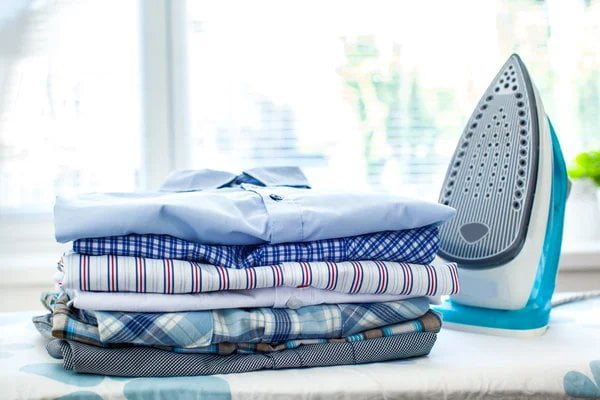Gorilla Glue is a brand of cyanoacrylate glue that has become extremely popular for its ability to bond various materials together. It’s ideal for woodworking because it can bond to both wood and metal, making it perfect for repairing the furniture, creating wood crafts, and more.
Continue reading this and learn how to use Gorilla glue on different materials.
Gorilla Glue Guide, What Is Gorilla Glue Suitable For?, Gorilla Glue Uses
How to Use Gorilla Glue
It’s important to read the instructions on your container of Gorilla Glue before using it.
The following steps will help you get started using Gorilla Glue:
Prepare the surface
Remove any loose debris and dirt from the surface you want to glue. If the surface is dirty, clean it with water using a soft cloth or sponge.
Apply Gorilla Glue
Apply a thin layer of Gorilla Glue to one side of the two surfaces you want to join together. Spread the glue evenly over the surface with a putty knife or other flat-edge tool. The amount of glue needed will depend on the size and shape of your project.
Press firmly together
Press firmly together the two surfaces that have been coated with Gorilla Glue, aligning them carefully and making sure there are no gaps between them.
Allow it to dry
Allow it to dry for at least 30 minutes before handling or moving it around too much so that it doesn’t crack or break apart before drying completely.
How to Make Gorilla Glue Dry Faster ( Find Out Here)
How to Use Gorilla Glue on Plastic
Gorilla Glue is a super-strong glue that can be used to bond different materials together. It’s great for repairing broken plastic and other materials, but it’s important to know how to use it properly.
Here are some tips for using Gorilla Glue on plastic:
- Clean the surface before applying Gorilla Glue. Dirt, grease, and oil will prevent the glue from sticking properly, so make sure your plastic is clean before applying it.
- Apply Gorilla Glue to both surfaces of your plastic using a paintbrush or a silicone basting brush.
- Allow it to dry completely before handling the piece of plastic, this will take about 10 minutes if you’re using the gel form of the glue and 30 minutes if you’re using the liquid form.
- Once your piece of plastic has dried thoroughly, place one piece of plastic on top of another piece and press firmly together until they bond together tightly.
How to Use Gorilla Glue on Metal
Gorilla Glue is a great adhesive for metal. It’s strong and holds put for a long time. You can use it to repair many different types of metal items, including tools, appliances, and vehicles. The glue works best on clean surfaces that are free of oil or grease.
- To use this type of glue on metal, first, clean off any dirt or oil from your project surface with soap and water or rubbing alcohol (a degreaser).
- Then apply a thin layer of the adhesive over your surface using an applicator like a brush or rag.
- Let this sit for 30 seconds before applying the second coat, this will ensure an even coat with no gaps between the joints.
- Let everything dry completely before moving on to sanding (if necessary) and painting.
How to Use Gorilla Glue on Glass
You can use Gorilla Glue on the glass as long as you follow the manufacturer’s instructions carefully. The glue bonds extremely well to glass so that it can hold heavy objects in place without letting go. However, if you don’t take precautions when applying the glue, it might not hold up as expected.
- Apply a thin layer of Gorilla Glue to the broken edge of your glass. You can do this with a brush or simply your finger if you don’t have access to any other tools.
- Press the two pieces together firmly until they are bonded together by the glue and no longer move freely relative to each other.
- Allow the glue to dry fully before use or handling by others.
How to Use Gorilla Glue on Foam
If you want to attach foam pieces to each other or to something else, Gorilla Glue can be a great option. It will hold strong and it’s easy to apply. Here’s how:
- Clean the surface of both pieces of foam before applying glue. This will help ensure that there are no oils or dirt on either surface that could interfere with the bond between them.
- Apply a small amount of adhesive to one side of each piece of foam. You’ll want enough to cover the surface but not so much that it oozes out when you press the pieces together.
- Spread the gorilla glue evenly over both surfaces using your fingers or a brush designed specifically for use with adhesives like Gorilla Glue.
- Press the two pieces together firmly so that they make contact everywhere there is adhesive on both surfaces. Hold them together.
- Allow the glue to dry completely before using your project or storing it because it will be difficult to work with while it is still wet.
How to Use Gorilla Glue on Ceramics
Gorilla Glue is perfect for making ceramics, whether you’re working with clay or glass.
- To use Gorilla Glue on ceramics, first, prepare your work surface.
- Next, spread out some of the glue onto a piece of cardboard or cardboard backing. This will give you more control over how much glue you’re applying to your project as well as help prevent clumping when using a brush or gloved hand.
- Finally, apply the glue in thin layers using a brush or gloved hand until all surfaces are covered thoroughly.
How to Use Gorilla Glue Epoxy
- Mix equal parts resin and hardener together in an empty container.
- Pour the mixed glue into an applicator bottle or similar container and apply a thin layer of glue where you want it to go (such as between two pieces of wood).
- Allow at least 24 hours for the gorilla glue to fully cure before moving anything.
Using Gorilla Glue on Stone
You can use it on countertops, tabletops, shower walls, floors, and more.
- The first way involves using a brush applicator or roller to apply the glue evenly onto the surface of your stone.
- Next, use another brush or roller to spread the adhesive evenly across your project area until it is completely covered with glue.
- Once this has been done, allow the glue to set for several hours before proceeding with any additional steps in your project.



